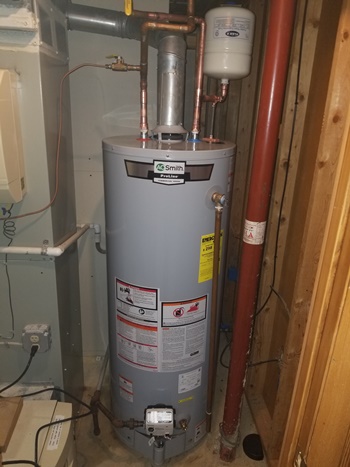Ensuring Longevity of Your Home's Hot Water System: Maintenance TipsEffective Methods to Care for Your Home's Hot Water System Successfully
Ensuring Longevity of Your Home's Hot Water System: Maintenance TipsEffective Methods to Care for Your Home's Hot Water System Successfully
Blog Article
What're your thoughts about How to Maintain a Hot Water Heater in a Few Simple Steps?

Hot water is crucial for day-to-day comfort, whether it's for a rejuvenating shower or washing recipes. To guarantee your hot water system runs successfully and lasts much longer, regular maintenance is key. This write-up gives functional suggestions and insights on just how to preserve your home's hot water system to stay clear of disturbances and expensive repairs.
Intro
Preserving your home's warm water system might appear complicated, but with a couple of basic steps, you can guarantee it runs smoothly for several years to find. This guide covers whatever from understanding your hot water system to do it yourself maintenance ideas and knowing when to hire expert help.
Significance of Keeping Your Hot Water System
Routine upkeep not only prolongs the life-span of your hot water system however additionally ensures it runs successfully. Overlooking upkeep can bring about decreased effectiveness, greater energy expenses, and also early failure of the system.
Indications Your Warm Water System Needs Maintenance
Knowing when your hot water system needs interest can protect against major problems. Keep an eye out for indicators such as inconsistent water temperature, unusual sounds from the heating system, or rusty water.
Understanding Your Hot Water System
Prior to diving right into upkeep jobs, it's helpful to comprehend the fundamental parts of your warm water system. Typically, this includes the water heater itself, pipelines, anode poles, and temperature level controls.
Month-to-month Maintenance Tasks
Regular monthly checks can assist catch small problems prior to they rise.
Purging the Water Heater
Purging your hot water heater eliminates sediment build-up, boosting effectiveness and extending its life.
Checking and Replacing Anode Rods
Anode rods protect against deterioration inside the container. Checking and replacing them when worn out is crucial.
Inspecting and Readjusting Temperature Level Setups
Adjusting the temperature setups makes sure ideal performance and safety.
Do It Yourself Tips for Upkeep
You can carry out several upkeep jobs yourself to maintain your warm water system in top condition.
Looking for Leakages
Frequently evaluate pipelines and connections for leaks, as these can bring about water damages and greater expenses.
Examining Stress Relief Valves
Testing the stress relief valve guarantees it operates properly and avoids excessive stress buildup.
Shielding Pipes
Insulating warm water pipes minimizes warm loss and can save power.
When to Call a Professional
While DIY upkeep is useful, some issues call for expert expertise.
Facility Issues Needing Professional Aid
Examples include significant leaks, electric issues, or if your water heater is consistently underperforming.
Routine Specialist Upkeep Advantages
Specialist maintenance can include detailed assessments, tune-ups, and ensuring conformity with safety criteria.
Final thought
Regular upkeep of your home's hot water system is essential for performance, durability, and price savings. By complying with these pointers and understanding when to seek specialist help, you can make sure a reliable supply of hot water without unexpected disturbances.
How to Maintain an Instant Hot Water Heater
Before tinkering with your hot water heater, make sure that it’s not powered on. You also have to turn off the main circuit breaker and shut off the main gas line to prevent accidents. Also turn off the water valves connected to your unit to prevent water from flowing into and out of the appliance. 2. When you’re done, you have to detach the purge valves’ caps. These look like the letter “T” and are situated on either side of the water valves. Doing so will release any pressure that has accumulated inside the valves while at the same time avoid hot water from shooting out and burning your skin. 3. When the purge valves’ caps are removed, you have to connect your hosing lines to the valves. Your unit should have come with three hoses but if it didn’t, you can purchase these things from any hardware or home repair shops. You can also get them from retail stores that sell water heating systems. Read the user’s manual and follow it to complete this task properly. When the hosing lines are connected, open the purge port’s valves. 4. You should never use harsh chemical cleaners or solutions when cleaning your unit. Make use of white vinegar instead. It should be undiluted and you’ll probably use about 2 gallons. 5. Now flush your water heater. This task should probably take about 40 minutes. We can’t give you specific directions for this because the procedure is carried out depending on the type, model and brand of your heater. With that being said, refer to the user’s manual. 6. When you’re done draining the unit, you have to turn off the purge port valves again. Remove the hosing lines that you earlier installed on each of the water valves. Put the valve caps (purge port) back in their respective places and be very careful so as not to damage the rubber discs that are found inside these caps. 7. Now that everything’s back in place, check your user’s manual again to find out how to reactivate your water heating system. 8. Once it is working, turn one of your hot water faucets on just to let air pass through the heater’s water supply pipes. Leave the tap on until water flows smoothly out of it. https://www.orrplumbing.com/blog/2014/september/how-to-maintain-an-instant-hot-water-heater/

Hopefully you enjoyed reading our piece about How to Maintain Your Water Heater & Prolong its Life. Many thanks for finding the time to read our piece of content. Feel free to take the opportunity to distribute this blog entry if you enjoyed it. I am grateful for your time. Come back soon.
Click Report this page